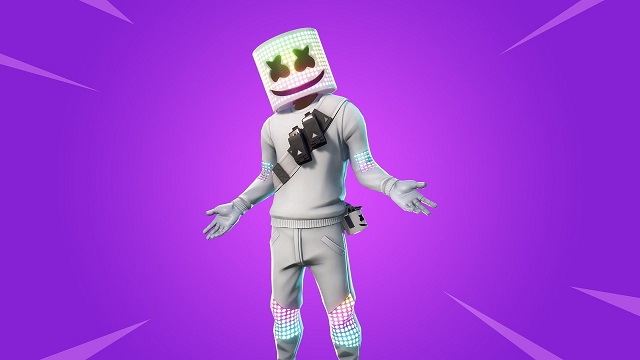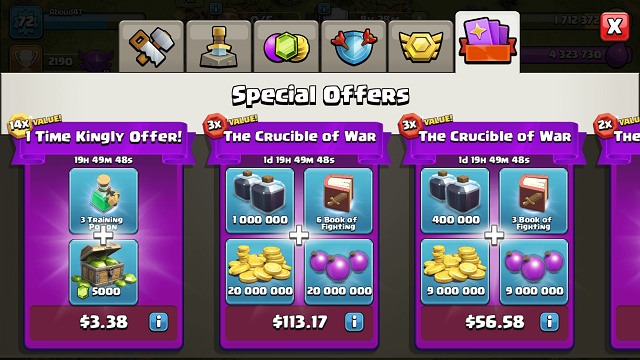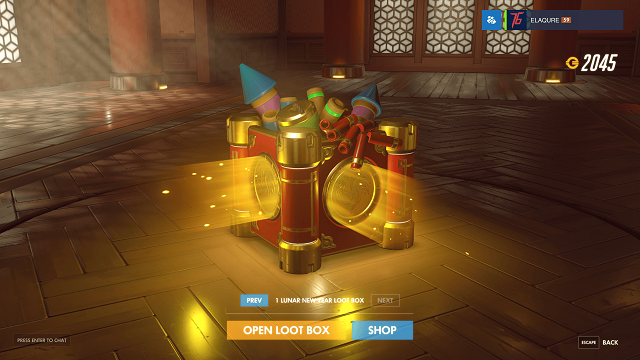Microtransaction is growing stronger and becoming one of the most profitable business models in the gaming industry.
There was a time in the gaming industry. You only need to pay once to get the full experience without spending any extra money. Over time, game developers have developed a new business plan to have more capital to maintain and grow microtransaction.
This concept of micro-transactions has been around since 2001, in a social networking game called Habbo Hotel. By the end of 2005 – early 2006, Microsoft introduced its trading system called Microsoft Points, where users can spend real money on digital goods. Since then, microtransaction has become more and more popular in the gaming industry.

Microtransactions and prices may be included in different forms for each game, but its nature is unchanged. It can be considered an essential business model for games released in the free state, helping game makers have a stable income source for future projects.
However, over time, microtransaction has become a model for game makers to “collect” gamers’ wallets and in many different ways. Some forms of microtransactions become so cynical that some countries are forced to put them on a banned list.
Expand the content

This is a form of microtransaction through which the developers or developers convert the real money of gamers into additional content for the original game or call it a DLC. Usually, these DLC can be sold separately or bundled with the original game (of course, at a higher price). Some sub-branches of the content expansion include:
- Expand the campaign
- Independent expansion
- DLC Multiplayer
The campaign extension and standalone extension have to provide a different experience to the world, character lines, and new storylines. Independent expansion is how developers can focus more on some of the original game’s prominent characters besides the main character. For example, The Last of Us: Left Behind talks more about Ellie’s past, Uncharted: The Lost Legacy talks about Chloe Frazer and Nadine Ross.
On the other hand, the campaign expansion is based on the original game’s plot. It is sometimes a new land opened up on the map, an idea that complements and aligns with the main story. The main character is also preserved. For example, Grand Theft Auto IV: The Lost and Damned, The Witcher III: Wild Hunt – Blood and Wine or Bloodborne: The Old Hunters.
Battle Pass

Since 2017, the Battle Royale game genre has emerged as a powerful force in the gaming community. It has too much influence on the development of the gaming industry. However, the weakness of Battle Royale is that it is challenging to innovate. The game mostly takes place on a vast map, where players are free to do anything but rob cars, steal guns, and defeat other players to become the last survivor. Maybe each game will be different, but we still have to follow the most basic Battle Royale.
Over time, the repetition of this genre leads to boredom. That’s when the Battle Pass came in, making the Battle Royale more interesting. This form of microtransaction requires gamers to pay a small amount of money in exchange for rewarded missions, sometimes real money or currency, in-game items. Players who want to receive a reward must complete the tasks or activities that the Battle Pass requires.
Once completed, the next season’s Battle Pass will be renewed, offering missions and various rewards. This helps players always feel new though the gameplay mechanism does not need to change anything. The price of a Battle Pass is usually around $ 10 or more per season.
Skin beauty

This is a form of microtransaction game companies hit psychology want to stand out from players. In online games or multiplayer games, most of us want our characters to have a unique appearance compared to the rest. Therefore, the game company has developed beauty items to buy them and refresh their feelings through the in-game store.
Depending on the game, this form of “beautification” is developed differently. Some games allow skins to increase their stats, but games release skins that have only a beauty function. Even if there’s no effect on a match, the skin market is still a relatively stable monetization model for brands. The most famous is Counter-Strike: Global Offensive (CS: GO) or Team Fortress 2.
With this type of microtransaction, players will beautify their weapons and their character’s appearance. Epic Games excels in this category with Fortnite. In 2018 alone, the company earned $ 2.4 billion solely due to the sale of beauty skins. This money allowed them to reach important deals, expanding to copyrighted skins from movies or comics.
Converting digital currency in the game

Another form of microtransaction is also prevalent today, converting real money into money in the game. Each game will have different ways of calling and converting from real cash to digital money. For example, Fortnite is called V-buck, Clash of Clans will be called Gems or Points as in FIFA. Players use this digital currency to trade items or any microtransactions in a game.
This is the microtransaction mechanism that caused a lot of controversy in the gaming community. It divides the rich and the poor gamer. People who deposit more and more money will become stronger, more VIP items and free players will never be able to catch up, despite plowing the game for a lifetime.
Besides, some games allow conversion to digital currencies to buy beauty skins. They do not affect the level and fairness in each match. There are mobile games that deposit real money, convert it into in-game money to remove ads.
Save time

If you play video games regularly on your phone, you probably will not find it strange to wait for time to receive rewards or wait for time to recover playing energy. This is one way for game developers to direct you to a microtransaction method to buy money on the purchase. This method has a lot of controversies involved.
It has no effect on fairness in matches or fairness between gamers. The recharge allows gamers to shorten the waiting time and have immediate access to the content packages waiting for the publishers to unlock. So is that good or bad? This was difficult to determine when many gamers complained that their games were limited in power, so they could not plow the game for too long, and eventually, they had to spend money to buy gaming power. They find it ridiculous that I have to purchase turns for a game I’ve already spent all my money to support.
Anyway, if you are afraid to wait, the game publisher has opened the opportunity for you to experience faster, save more time by spending money.
Loot Box

Perhaps we are all familiar with Loot Box. This is the focus of controversy of the gaming community as well as many countries around the world. Many people consider this to be a type of disguised gambling. Players will deposit a total amount of money, then convert it into digital currency to buy Loot Box. Eventually, you will have to sit, hoping you open something delicious. However, most of these Loot Box gives players inhibition and frustration because all items are jagged.
Whether opening Loot Box depends on luck or not, nobody knows. But it has sparked a lot of criticism when many games intentionally rely on Loot Box, forcing gamers to recharge to open equipment to upgrade.
However, it’s undeniable that the Loot Box business model brings a lot of money. Blizzard once revealed that Loot Box deals helped them earn up to $ 1 billion in revenue. This gives them abundant capital to reinvest and develop games. Therefore, the Loot Box idea is a form of microtransaction that needs to be removed has not been solved so far.





